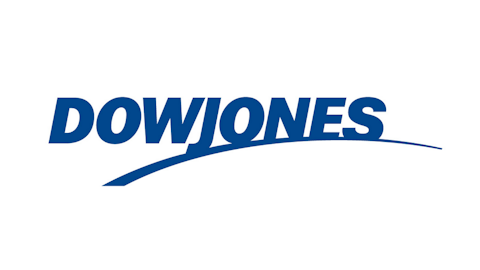We are all searching for that one stock that exponentially grows our investment. If you are looking for such a play in the restaurant sector, I can recommend one to you. This company has rewarded shareholders over the last five years with 200% returns, yet it’s still not too late to get in. Actually — as you will see — the biggest growth for this company is still in the future.
Same-store sales

A restaurant’s ability to retain and grow customers says a lot about the company. Both Tim Hortons Inc. (USA) (NYSE:THI) and McDonald’s Corporation (NYSE:MCD) have fantastic track records in same-store sales.
| Company | 2010 | 2011 | 2012 |
| McDonald’s | 5% | 5.6% | 3.1% |
| Tim Hortons* | 5%** | 4% | 2.8% |
*Canada results. Does not reflect United States stores.
**approximate
McDonald’s Corporation (NYSE:MCD) had nearly a decade of consistent same-store sales growth until October. That month, the company reported that same-store sales decreased 1.8%. Since then McDonald’s has been hit or miss with its monthly same-store sales. But overall, the company has consistently grown this metric.
Similarly, Tim Hortons Inc. (USA) (NYSE:THI) impressively averaged 5.1% annual same-store growth over the last decade. But in the most recent quarter, the company reported that Canadian same-stores sales fell 0.3% — a very small amount — but the first quarterly decrease since the company went public in 2006.
Same-store sales can be an important metric for investors looking to assess the health of a company. But this metric is not the one that is going to reward investors with substantial growth. In the restaurant sector, these opportunities are found in a company’s expansion plans.
Expanding restaurant chains
Both McDonald’s Corporation (NYSE:MCD) and Tim Hortons Inc. (USA) (NYSE:THI) realize same-store sales aren’t enough and they must work to grow their businesses. How are they accomplishing this?
India — the world’s most populous nation — is one place that McDonald’s Corporation (NYSE:MCD) is significantly focusing on. By offering a non-vegetarian menu, and by including happy meal toys from India’s #1 cartoon show, the company is paving the way towards its goal of 500 locations in the country by 2015.
Tim Hortons Inc. (USA) (NYSE:THI), likewise, is expanding its coffee empire to the United States and the Middle East. The company’s expansion in the Middle East is actually ahead of schedule, and it looks to open around 100 locations in the region by the end of 2017, in addition to the 20 it already has.
| Company | New in 2012 | Year-End Total | 2013 Target | Projected Increase |
| McDonald’s | 970 | 34,480 | 1,500-1,600 | 4%-5% |
| Tim Hortons | 263 | 4,264 | 250-290 | 6%-7% |
| Buffalo Wild Wings (NASDAQ:BWLD) | 74 | 891 | 105 | 12% |
| Texas Roadhouse (NASDAQ:TXRH) | 9 | 392 | 33 | 8% |
| BJ’s (NASDAQ:BJRI) Restaurants | 15 | 130 | 17 | 13% |
McDonald’s Corporation (NYSE:MCD) and Tim Hortons Inc. (USA) (NYSE:THI) do a good job with retaining customers as shown with the same-store figures, and they both continue to expand the business. But these growth stories aren’t as exciting as three smaller players: Buffalo Wild Wings (NASDAQ:BWLD), Texas Roadhouse Inc (NASDAQ:TXRH), and BJ’s Restaurants, Inc. (NASDAQ:BJRI).
These three companies look minuscule in comparison to McDonald’s empire, yet these three companies are outgrowing both McDonald’s and Tim Hortons in expanding their chains, and are also outperforming in one other very important metric: net income growth.
Show me the money
BWLD Net Income TTM data by YCharts
Buffalo Wild Wings (NASDAQ:BWLD), Texas Roadhouse Inc (NASDAQ:TXRH), and BJ’s Restaurants, Inc. (NASDAQ:BJRI) focus on growing their total number of locations, and these new locations are converted into higher profits.
How are they growing?
BWLD Long Term Debt data by YCharts
There’s a blip at the end of this chart showing Wild Wings’ $5 million in debt, but it’s nothing to worry about. The company has a $100 million line of credit that was set up in February. Buffalo Wild Wings used $5 million during the quarter, but then paid it off before the end of the quarter. Those who love this company’s rock solid balance sheet can rest easy: the company is still debt-free. So is Texas Roadhouse and BJ’s.
This is key to investors for several reasons. First, debt-free growth can only happen when a business has already proven its business model and the acceptance of its product. When you buy a debt-free company, chances are that business is strong and healthy. Second, debt-free growth companies are in a better position to reward shareholders than debt-laden companies. In times of struggle, a company with high debt will throw shareholders under the bus to survive using tactics like dividend cuts and share dilution. Debt-free companies — free from creditor concerns — can put shareholders first even during lean times.
Foolish Conclusion
Income investors love McDonald’s or Tim Hortons. Both are very healthy companies offering a long track record of dividend payouts. McDonald’s currently pays out about 3%, and Tim Hortons 2%. Yet, Texas Roadhouse can be an opportunity for growth and income. Its dividend has been paid out since 2011, has gone up each year, and currently sits at 2%. The company doesn’t have a long history of dividends that income investors are often looking for, but seems to be safe considering the company’s $95 million in cash.
BJ’s Restaurants is targeting a 425 location goal — over a 300% increase from the current number. One of the unique ways it is growing is by opening restaurants in “clusters” — restaurants located near one another. By doing this, BJ’s can cut infrastructure costs and create brand awareness — presently an admitted weakness of the company.
Buffalo Wild Wings is targeting 20% net income growth this year, and if the first quarter was any indication, it is on pace to do so. With 105 new locations this year — including new markets like Puerto Rico and the United Arab Emirates — this is poised to be the largest growth spurt in the history of the company. I’m very bullish on Texas Roadhouse and BJ’s Restaurants, but my top pick in the restaurant sector remains Buffalo Wild Wings.
The article Why You Need This Restaurant Stock in Your Portfolio originally appeared on Fool.com and is written by Jon Quast.
Jon is a member of The Motley Fool Blog Network — entries represent the personal opinion of the blogger and are not formally edited.
Copyright © 1995 – 2013 The Motley Fool, LLC. All rights reserved. The Motley Fool has a disclosure policy.



